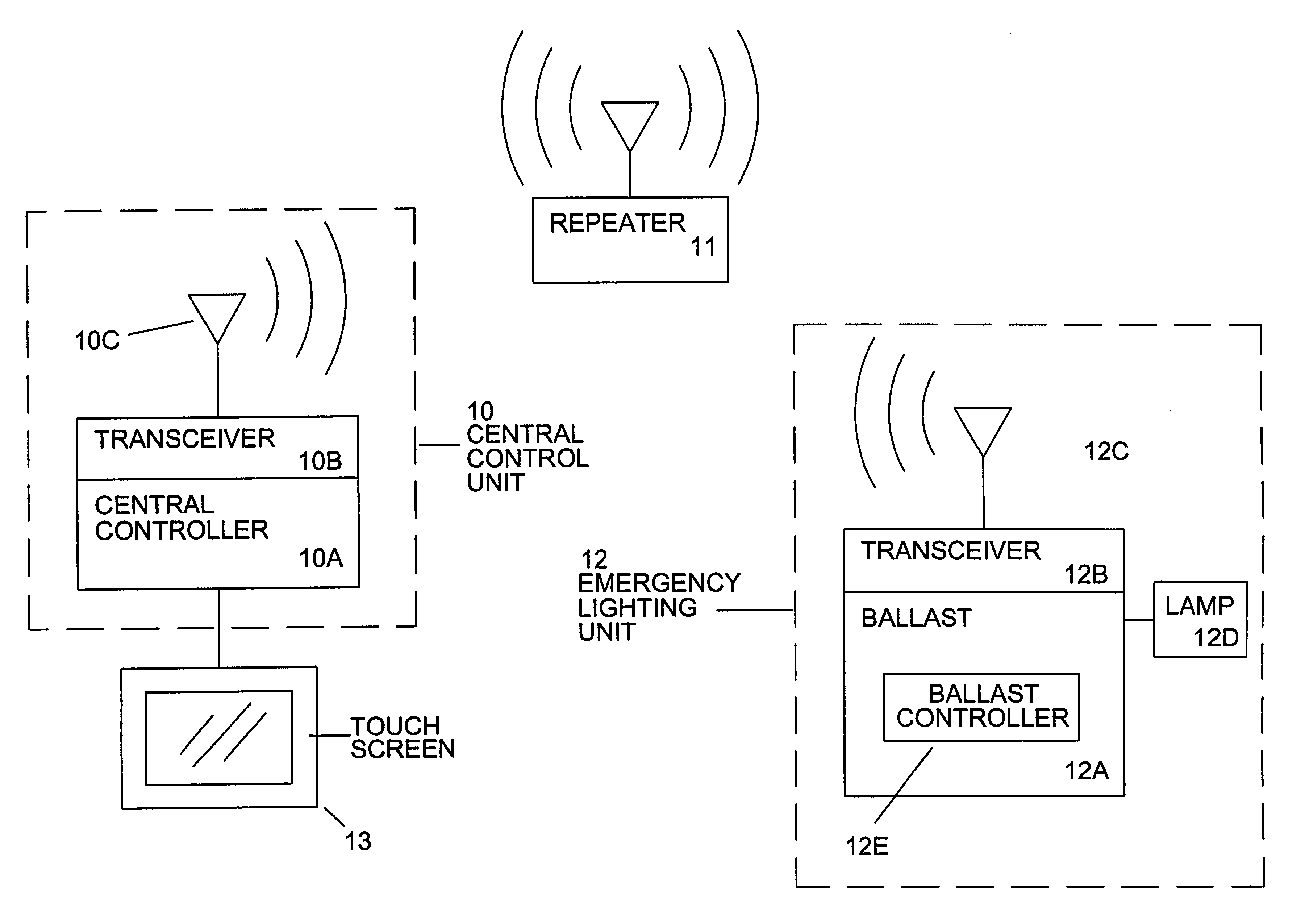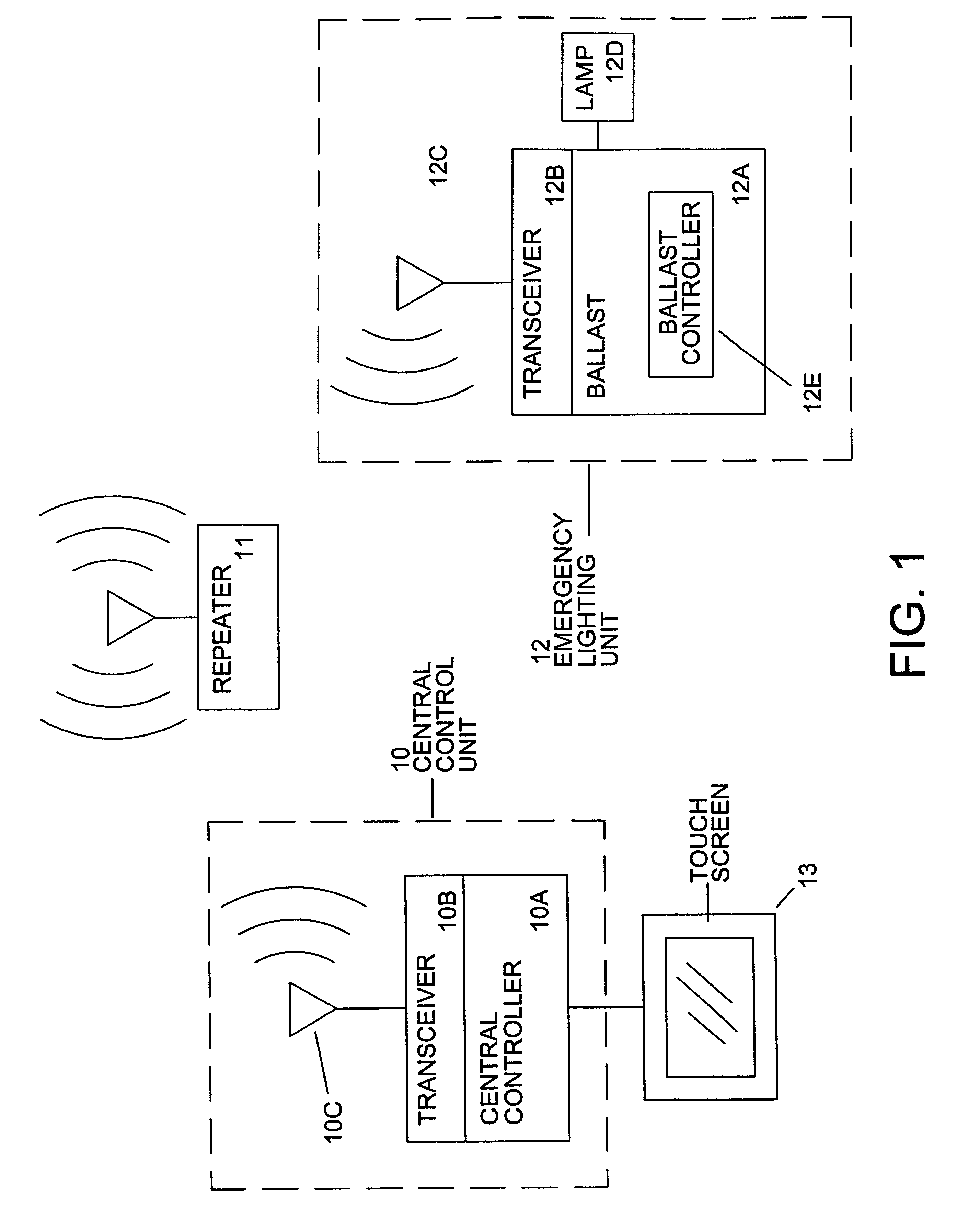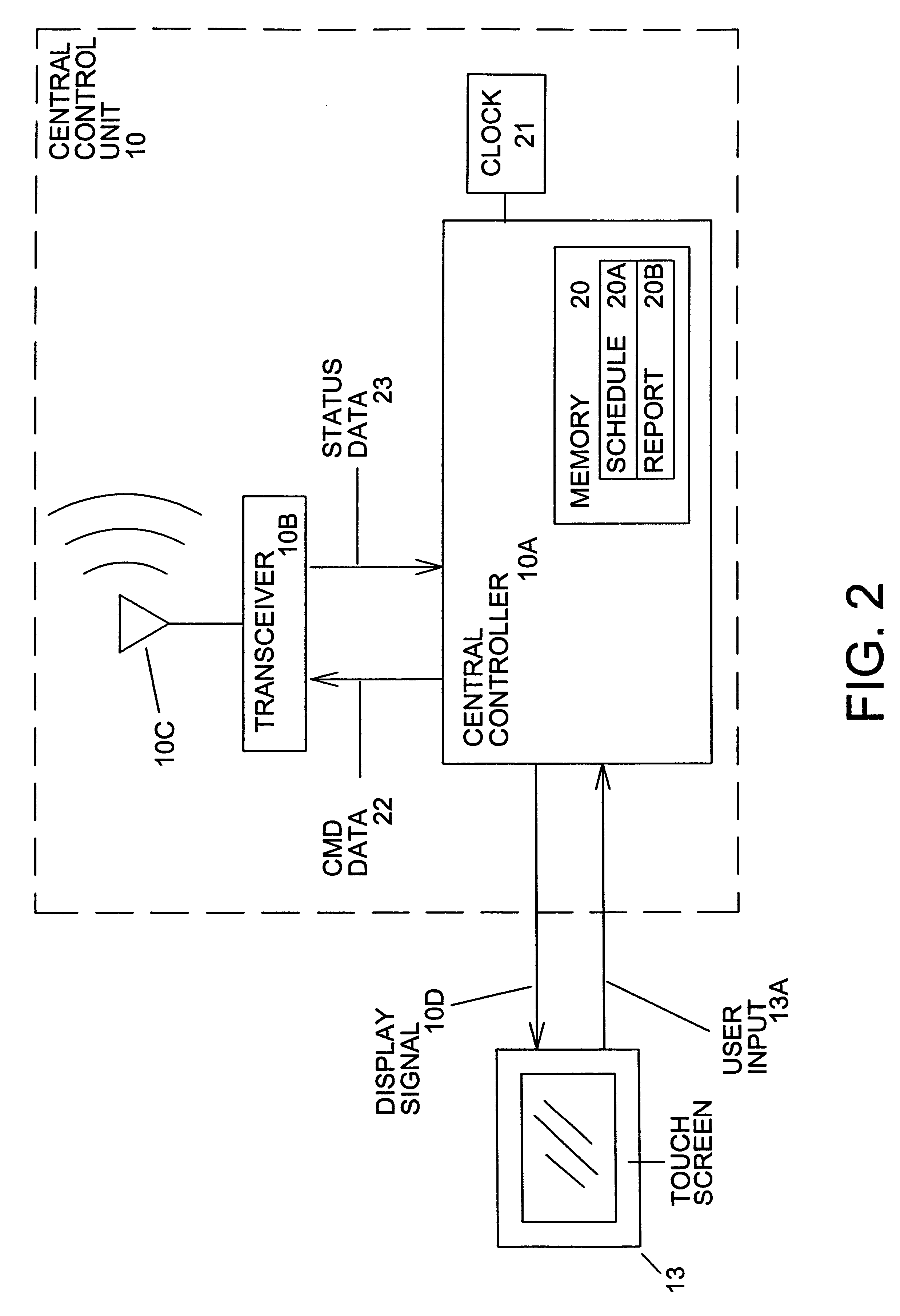Emergency lighting remote monitoring and control system
a technology for remote monitoring and control systems, applied in testing/monitoring control systems, process and machine control, instruments, etc., can solve the problems of affecting the operation of the equipment, the cost of personnel to perform the testing and recording of the test results, and the inability to monitor the lighting. the effect of reducing the operating cost and reducing the installation cos
- Summary
- Abstract
- Description
- Claims
- Application Information
AI Technical Summary
Benefits of technology
Problems solved by technology
Method used
Image
Examples
Embodiment Construction
FIG. 1 is a block diagram of the preferred embodiment of the invention. Shown in FIG. 1 are central control unit 10, repeater 11, emergency lighting unit 12, and user interface 13. Central control unit 10 communicates with emergency lighting unit 12 via wireless radio signals. Repeater 11 relays signals between control unit 10 and lighting unit 12 when distance or interference prevents direct communication.
Emergency lighting unit 12 comprises ballast 12A, ballast transceiver 12B, ballast antenna 12C, and lamp 12D. Lighting unit 12 differs from the prior art in several aspects. Lighting unit 12 includes the addition of ballast transceiver 12B, antenna 12C, and ballast controller 12E. Ballast transceiver 12B and antenna 12C provide remote communication with control unit 10. Ballast controller 12E interfaces with transceiver 12B and coordinates self testing of emergency lighting unit 12. There may be up to 500 lighting units 12 located throughout a building or facility. All of the ligh...
PUM
 Login to View More
Login to View More Abstract
Description
Claims
Application Information
 Login to View More
Login to View More - R&D
- Intellectual Property
- Life Sciences
- Materials
- Tech Scout
- Unparalleled Data Quality
- Higher Quality Content
- 60% Fewer Hallucinations
Browse by: Latest US Patents, China's latest patents, Technical Efficacy Thesaurus, Application Domain, Technology Topic, Popular Technical Reports.
© 2025 PatSnap. All rights reserved.Legal|Privacy policy|Modern Slavery Act Transparency Statement|Sitemap|About US| Contact US: help@patsnap.com



